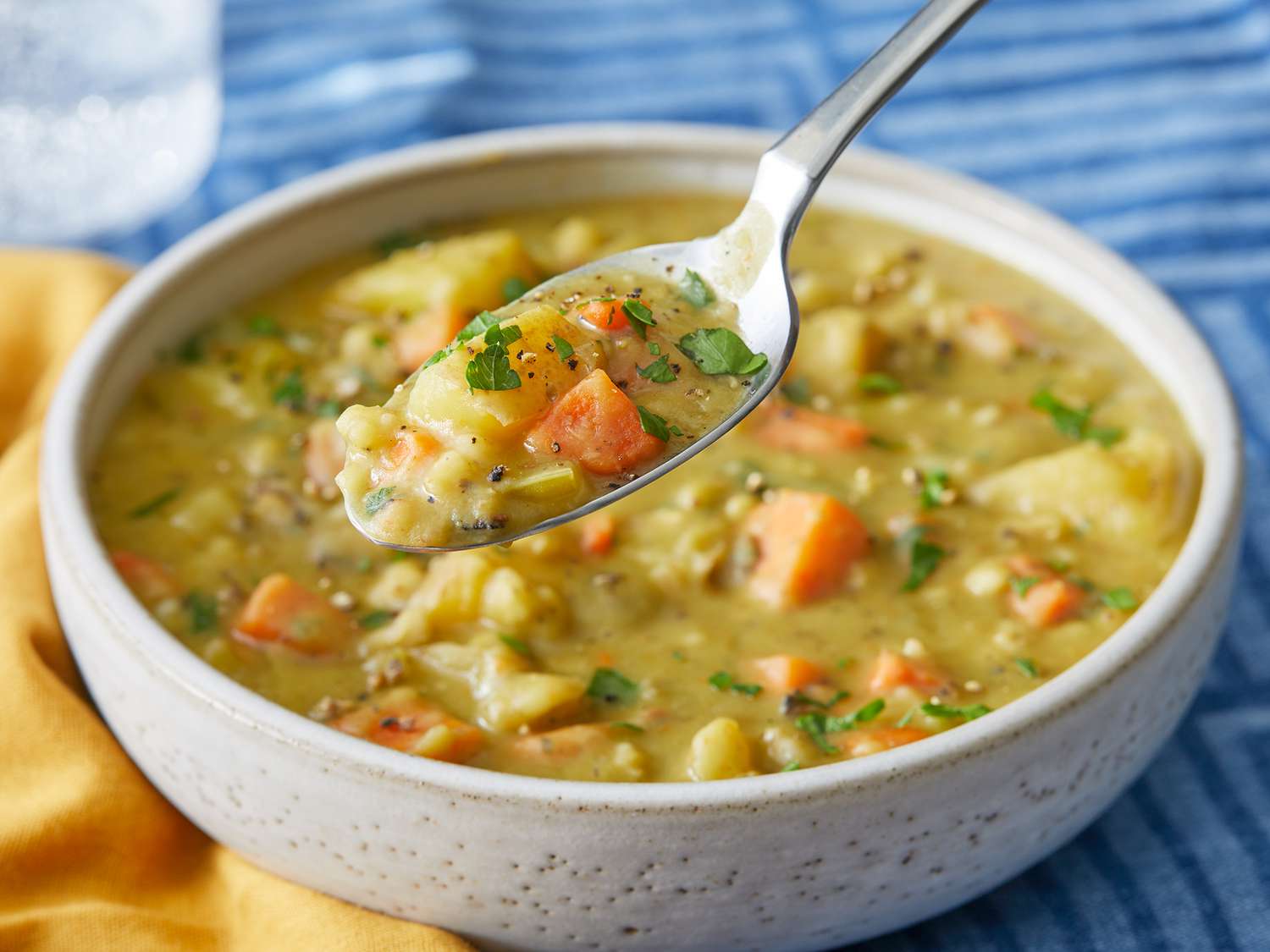
Split peas might seem like humble legumes, but they pack a punch when it comes to nutrition and history. Ever wondered why they’re a staple in so many kitchens? Split peas are not only rich in protein and fiber but also have a fascinating backstory. From ancient civilizations to modern-day recipes, these tiny powerhouses have been feeding people for centuries. Whether you’re a fan of hearty soups or looking to boost your diet with plant-based protein, split peas offer a versatile and nutritious option. Ready to learn more? Let’s dive into 20 intriguing facts about these little green gems.
Key Takeaways:
- Split peas come in green and yellow varieties, both high in protein and rich in fiber, vitamins, and minerals. They're great for vegetarians and easy to cook with for quick, nutritious meals.
- Split peas have a fascinating history, from ancient Egyptian cultivation to being a staple for European peasants. They're not only good for your health but also for the environment, with a lower environmental impact compared to other protein sources.
What Are Split Peas?
Split peas are a type of legume that come from dried, peeled, and split seeds of Pisum sativum. They are commonly used in soups, stews, and other hearty dishes. Here are some interesting facts about these nutritious legumes.
-
Split peas come in two varieties: green and yellow. Both types have similar nutritional profiles but slightly different flavors.
-
Green split peas are sweeter, while yellow split peas have a milder, earthier taste.
-
Split peas are high in protein, making them an excellent meat substitute for vegetarians and vegans.
Nutritional Benefits of Split Peas
Split peas are packed with nutrients that offer various health benefits. Let's explore some of these nutritional advantages.
-
Split peas are rich in dietary fiber, which aids in digestion and helps maintain a healthy gut.
-
They are a good source of vitamins, including vitamin A, vitamin B1 (thiamine), and vitamin B9 (folate).
-
Split peas contain essential minerals like iron, magnesium, and potassium, which are vital for overall health.
Historical Significance of Split Peas
Split peas have been a staple in many cultures for centuries. Their historical significance is quite fascinating.
-
Ancient Egyptians cultivated split peas as early as 4800 BC, using them as a primary food source.
-
Split pea soup was a popular dish among the ancient Greeks and Romans, who valued its nutritional benefits.
-
During the Middle Ages, split peas were a common food for European peasants due to their affordability and long shelf life.
Cooking with Split Peas
Cooking with split peas is easy and versatile. They can be used in various dishes to add flavor and nutrition.
-
Split peas do not require soaking before cooking, unlike other legumes, which makes them convenient to use.
-
They cook relatively quickly, usually within 30-45 minutes, making them a great option for quick meals.
-
Split peas can be used to make traditional dishes like split pea soup, dal, and pea puree.
Environmental Impact of Split Peas
Split peas are not only good for your health but also for the environment. They have a lower environmental impact compared to other protein sources.
-
Growing split peas requires less water and fewer resources than raising livestock, making them a sustainable food choice.
-
Split peas help improve soil health by fixing nitrogen, which reduces the need for chemical fertilizers.
-
They have a low carbon footprint, contributing to lower greenhouse gas emissions compared to meat production.
Fun Facts About Split Peas
Here are some fun and lesser-known facts about split peas that might surprise you.
-
Split peas are often used in traditional New Year's dishes in some cultures, symbolizing prosperity and good luck.
-
In Sweden, split pea soup, known as "ärtsoppa," is traditionally eaten on Thursdays.
-
Split peas are a key ingredient in the classic French dish "potage Saint-Germain," a creamy pea soup.
-
The world's largest split pea soup was made in 2017 in Canada, weighing over 1,000 pounds.
-
Split peas are often used as a natural thickening agent in soups and stews due to their high starch content.
The Final Scoop on Split Peas
Split peas pack a punch in nutrition and versatility. These tiny legumes are loaded with protein, fiber, and essential vitamins. They’re not just for soup; you can use them in salads, stews, and even desserts. Their low cost and long shelf life make them a pantry staple. Plus, they’re a great option for those looking to reduce meat consumption without sacrificing protein.
Cooking with split peas is easy. Just rinse, soak if you want, and cook until tender. They’re perfect for meal prepping and can be stored in the fridge or freezer. Whether you’re a seasoned chef or a kitchen newbie, split peas offer endless possibilities. So, next time you’re at the grocery store, grab a bag and start experimenting. Your taste buds and your body will thank you!
Frequently Asked Questions
Was this page helpful?
Our commitment to delivering trustworthy and engaging content is at the heart of what we do. Each fact on our site is contributed by real users like you, bringing a wealth of diverse insights and information. To ensure the highest standards of accuracy and reliability, our dedicated editors meticulously review each submission. This process guarantees that the facts we share are not only fascinating but also credible. Trust in our commitment to quality and authenticity as you explore and learn with us.


